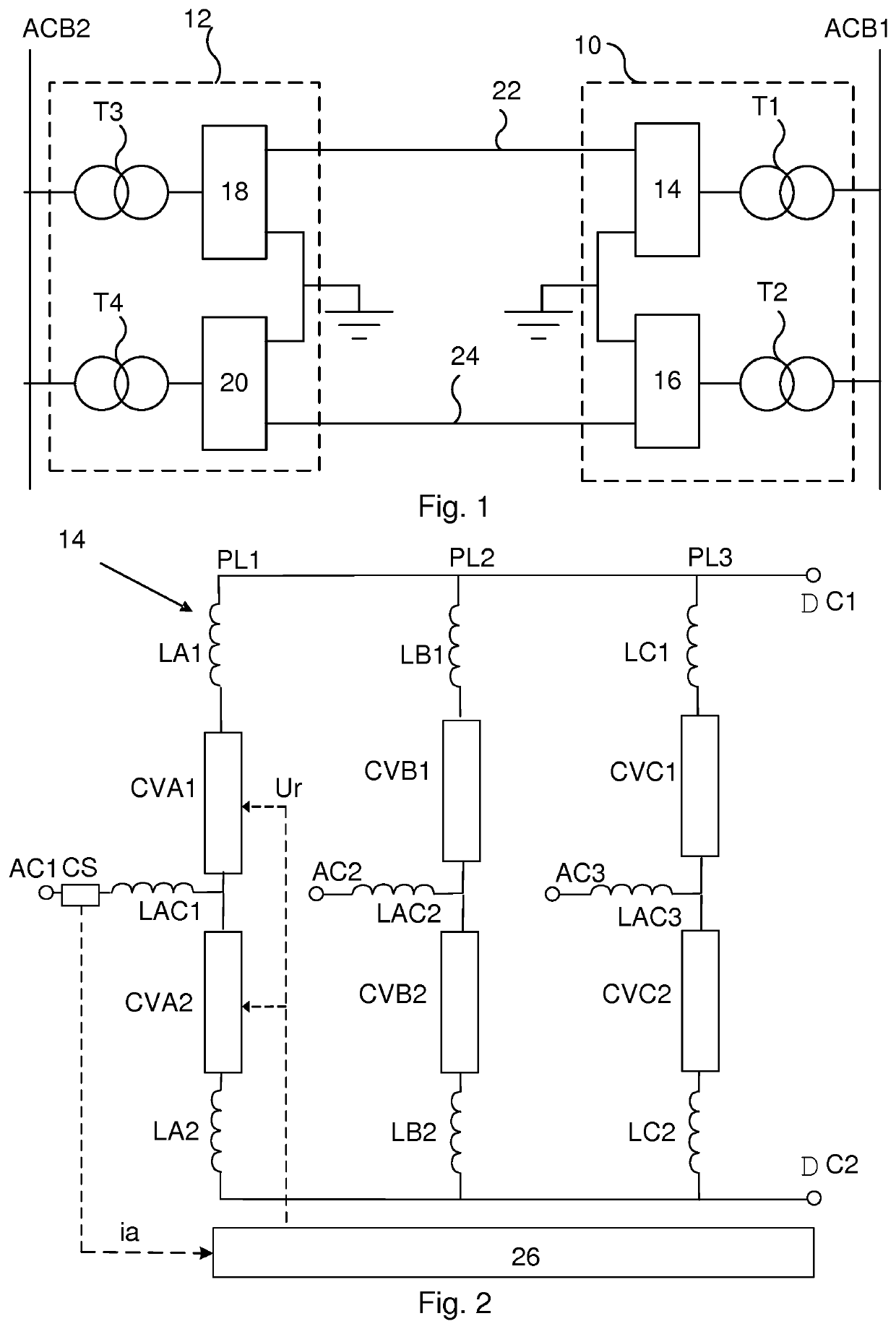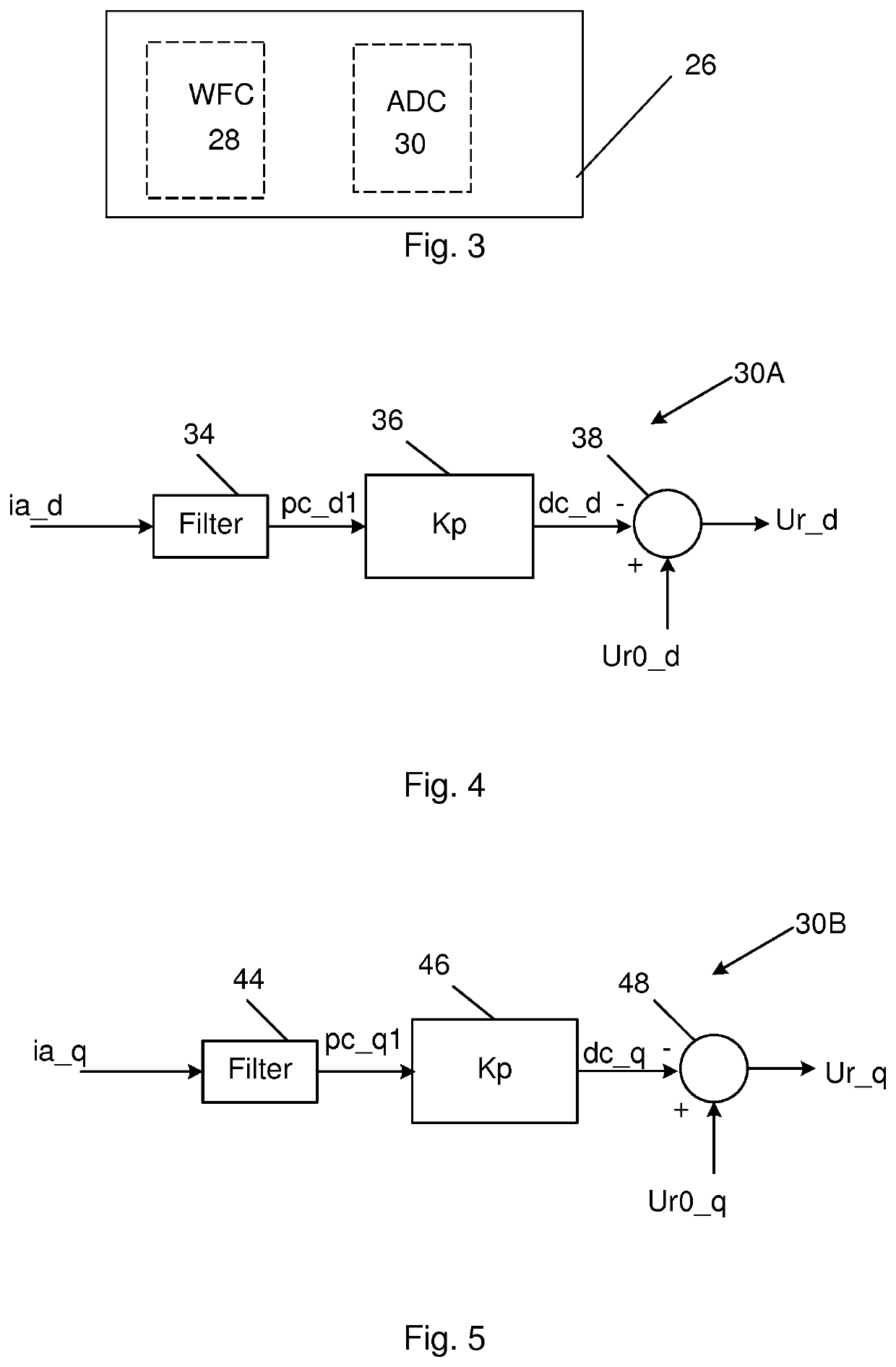Controlling a voltage source converter in a DC system
a voltage source converter and dc system technology, applied in the field of voltage source converters, can solve the problems of oscillations being damped and the risk of oscillation between the two poles, and achieve the effects of avoiding the introduction of potentially expensive components, efficient oscillation damping of power swings, and increasing the footprint of the converter
- Summary
- Abstract
- Description
- Claims
- Application Information
AI Technical Summary
Benefits of technology
Problems solved by technology
Method used
Image
Examples
Embodiment Construction
[0028]In the following, a detailed description of preferred embodiments of the invention will be given.
[0029]FIG. 1 shows a single line diagram of two converter stations 10 and 12, each connected to a separate Alternating Current (AC) system and being interconnected by a Direct Current (DC) system, which may be a High
[0030]Voltage Direct Current (HVDC) power transmission system. The DC system is a bipole system and therefore there is a first pole 22 and a second pole 24. For this reason also the first converter station 10 comprises a first and second converter 14 and 16 and the second converter station 12 comprises a third and a fourth converter 18 and 20. The converters convert between AC and DC and therefore each converter has a DC side facing the DC system and an AC side facing an AC system.
[0031]In the present example the first converter 14 of the first converter station 10 is connected to a first AC bus ACB1 via a first transformer T1 and the second converter 16 is also connect...
PUM
 Login to View More
Login to View More Abstract
Description
Claims
Application Information
 Login to View More
Login to View More - R&D
- Intellectual Property
- Life Sciences
- Materials
- Tech Scout
- Unparalleled Data Quality
- Higher Quality Content
- 60% Fewer Hallucinations
Browse by: Latest US Patents, China's latest patents, Technical Efficacy Thesaurus, Application Domain, Technology Topic, Popular Technical Reports.
© 2025 PatSnap. All rights reserved.Legal|Privacy policy|Modern Slavery Act Transparency Statement|Sitemap|About US| Contact US: help@patsnap.com



